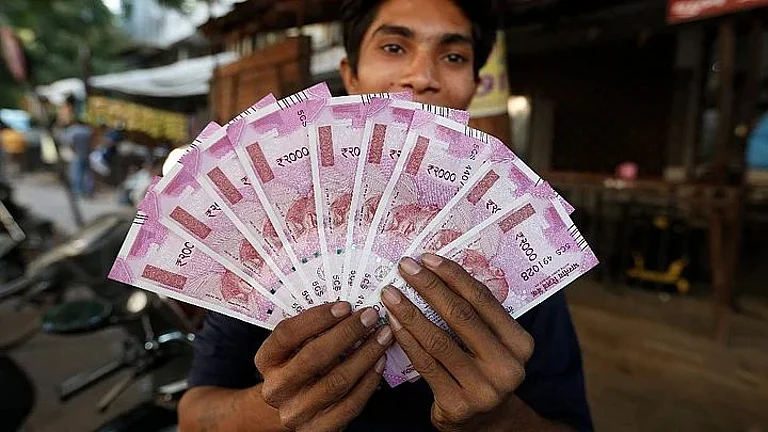India's benchmark indices— Sensex and Nifty—witnessed a sharp plunge on Monday after hitting consecutive fresh highs last week. While profit-booking, nervousness owing to the upcoming Q2 results and conflict in West Asia are the primary reasons behind the market bloodbath, there is another area of concern that is haunting investors, which is FII (Foreign Institutional Investors) flows.
While FIIs have remained net sellers for the better part of the year, September witnessed a reversal in this trend. This was quite visible a few weeks back, when FIIs purchased shares worth Rs 14,064 crores, marking their largest single-day buy in three years.
However, it seems FIIs have once again shifted their market preference and China is becoming their preferred choice.
While Indian markets did enjoy euphoric rally in September, even as global markets remained cautious, China’s market made a stronger comeback with a sharp surge.
For instance, the SSE 50 index (Shanghai Stock Exchange) was up by nearly 19.8 per cent or 455.47 points in September itself. Hang Seng Index followed a similar trajectory and was up over 20 per cent or 3,441.71 points during the same period.
There is no doubt that DIIs (Domestic Institutional Investors) in India are now coming out as a strong investor category, but FIIs continue to be an important class, especially for an emerging market like India. And that is why, there is a chance that a growing China might just pose a threat to India's market trajectory.
The Dragon goes up again
Just when it seemed that investors were pumping out their money from China, the republic made a surprising comeback. While investment banks like Goldman Sachs, UBS, and Bank of America had already downgraded the dragon nation's growth forecasts following mixed economic data, their market took a different turn last week. Two things worked well for the nation, first was an interest rate cut decision by the Central Bank of China and second was a massive stimulus package valued at nearly $142 billion.
All these factors combined have pushed China's market to clock in the largest single-day gains in 16 years on Monday. The CSI 300 blue-chip index has surged by nearly 30 per cent since its low in February. As per Reuters, this indicates that there is likely a bullish run in China's market.
Undoubtedly, India, which emerged as one of the most appealing markets among emerging nations seems to bear the brunt of this bullish sentiment in China. However, D-street analysts remain confident about India's stock market trajectory.
"In the short term, we may witness some reallocations from China to India as Chinese markets show signs of recovery. While its recovery might impact investment flows in India, it is unlikely to completely disrupt India’s bullish market trajectory. The increased participation of domestic retail and institutional investors can help mitigate any potential outflows from FIIs," said Akshat Garg, AVP-research, Choice Wealth.
In any case, risks remain high for India if China's economy continues to improve and FII flow diverges from the Indian market. This is largely because India's valuations are still considered high, unlike China's market which is attracting investors owing to overly cheap valuations.
Not an end game for India's bull rally
While China's stock market performance might overshadow India's bull run in the near term, it is worth noting that the Indian stock market has created a strong foothold, especially during the past few months. Last month, the country surpassed China in the MSCI AC World Investable Market Index. Indian stocks now hold a weight of 2.35 per cent as compared to China's 2.24 per cent.
"The weight of India in the global indices is now almost equal to that of China. While India's market valuations are stretched at 15 per cent-20 per cent above the long-term valuation, if the government continues on the path of reforms then more FII money will be attracted toward investments in the country," said Sharad Chandra Shukla, director, Mehta Equities.
Analysts remain optimistic about the domestic market's long-term trajectory for several reasons. Manish Chowdhury, head of research, StoxBox, believes that Indian markets should continue to perform well going ahead on the back of robust corporate earnings, well-calibrated fiscal and monetary policies, strong domestic liquidity, government measures to boost various sectors in the economy and continued traction in government capex.
Which Sectors Are Set to Bear the Burden?
Historically, the banking and IT sectors have been the most sensitive to foreign money outflows. While these sectors thrive on foreign investments, they can become quite vulnerable when that capital starts to flee, eventually causing volatility in stock prices.
"The Financial Services sector, which attracts a substantial share of FII investment, may experience heightened volatility and liquidity challenges. IT firms could face intensified pressures due to fluctuations in global demand," Garg added.































